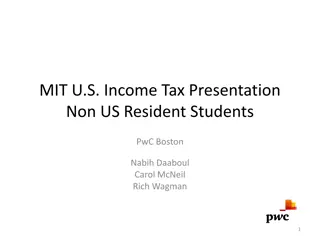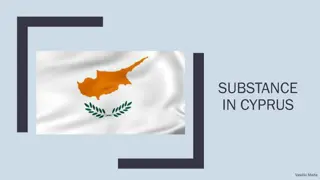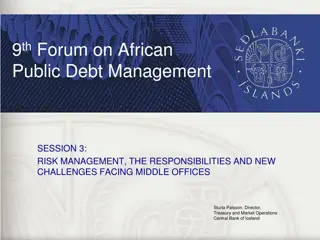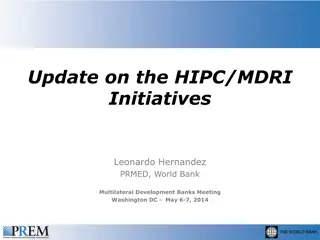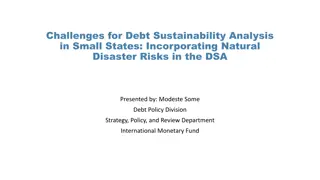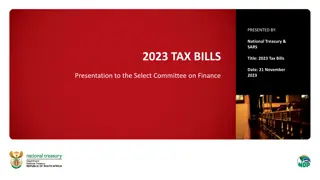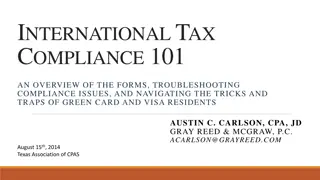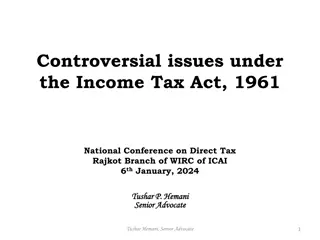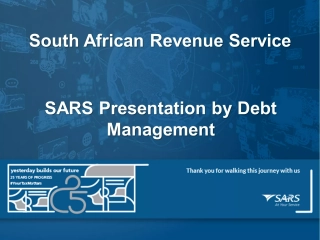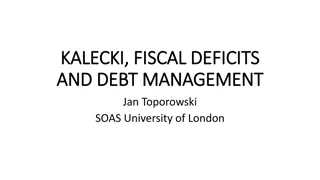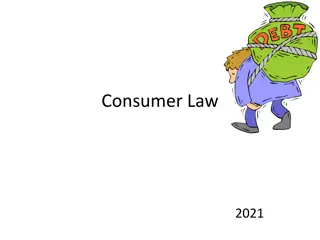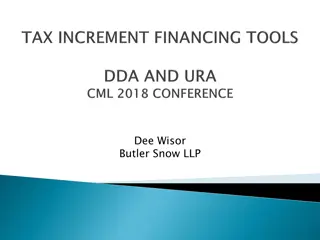African Perspectives on Improving Tax Justice and Addressing Debt Issues
Explore the implications of research findings on improving Domestic Resource Mobilization (DRM) and curbing Illicit Financial Flows (IFFs) in Africa to promote equality and social justice. The data highlights the significant external debt challenges faced by African countries and the issues related to Eurobonds. Concerns about global economic conditions, trade tensions, and fluctuations in African bond yields are also addressed, emphasizing the need for sustainable financial policies.
Download Presentation

Please find below an Image/Link to download the presentation.
The content on the website is provided AS IS for your information and personal use only. It may not be sold, licensed, or shared on other websites without obtaining consent from the author. Download presentation by click this link. If you encounter any issues during the download, it is possible that the publisher has removed the file from their server.
E N D
Presentation Transcript
Putting Findings of Research into all African Perspective Improving DRM and Stemming IFFS Tax Justice for Promoting Equality and Social Justice Nairobi, Kenya 13 March 2019 Fanwell Kenala Bokosi, PhD Executive Director
External Debt Stock/GNI 33.5% External Debt Stock/Exports 135.7% Concessional/External Debt Stock 32.4% 2017 $92 billion of outstanding African sovereign Eurobonds
2017 External Debt Stock/GNI 35.7% External Debt Stock/Exports 243.8% Concessional/External Debt Stock 56.2 % Algeria Libya Western Sahara (Morocco) Egypt Mauritania Niger Senegal Sudan Djibouti Mali Chad The Gambia Burkina Faso Guinea-Bissau Guinea Nigeria C te d'Ivoire Ethiopia Sierra Leone Central African Republic Ghana South Sudan Cameroon B=Burundi EG=Equatorial Guinea EG Kenya S o Tom and Pr ncipe L=Lesotho Gabon DR Congo R R=Rwanda B S=Swaziland Tanzania Seychelles External Debt Stock/GNI 65.2% External Debt Stock/Exports 179.4% Concessional/External Debt Stock 24.2 % Comoros Angola Zambia Zimbabwe Namibia Botswana S L South Africa
Tenor (yrs.) $ (bn) 5 10 10 30 Maturity Coupon 5.90% 6.90% 7.30% 8.30% 0.50 24-Jun-19 1.50 24-Jun-24 1.00 28-Feb-28 1.00 28-Feb-48 Algeria Libya Western Sahara (Morocco) Egypt Mauritania $4.00bn Niger Senegal Sudan Djibouti Mali Chad The Gambia Burkina Faso Guinea-Bissau Guinea Nigeria C te d'Ivoire Ethiopia Sierra Leone Central African Republic Ghana South Sudan B=Burundi Cameroon EG=Equatorial Guinea EG Kenya S o Tom and Pr ncipe L=Lesotho Gabon DR Congo R Tenor (yrs.) $ (bn) Maturity 0.75 1.00 1.25 Coupon 5.40% 8.50% 9.00% R=Rwanda B 10 10 12 20-Sep-22 14-Apr-24 30-Jul-27 S=Swaziland Tanzania Seychelles Comoros Angola Zambia $3.00bn Zimbabwe Namibia Botswana S L South Africa
Outstanding Eurobonds as at Jan 2019 $bn 20.0 18.9 18.9 18.0 16.0 14.0 12.0 11.2 10.0 7.3 8.0 6.0 5.0 5.0 4.8 4.54.0 4.0 3.0 2.72.2 1.3 1.0 0.8 0.7 0.4 0.3 0.2 0.1 2.0 0.0
Concerns about global growth and that of China A stronger US dollar The average yield of African eurobonds increased from 5.3% to 7.4% 2018 Tough Year? Sign of the Future? African yields are 2.9 percentage points higher than the Rest of the world AFRICAN PREMIUM The Fed raising US rates Trade Tensions
IMPLICATIONS OF THE INCREASE IN YIELDS $ 1 Billion 10 Year Eurobond 5.3 % 7.4 % $74 million a year $210 mn $53 mn per year $530 mn interest in 10 yrs $740 mn interest in 10 years
Debt Distress + 14.0% 7.4 % Exchange Rate Risk Credit Risk 21.4 % 96 % of bonds are on Fixed Rates Susceptibility to External Shocks Interest Rate Risk
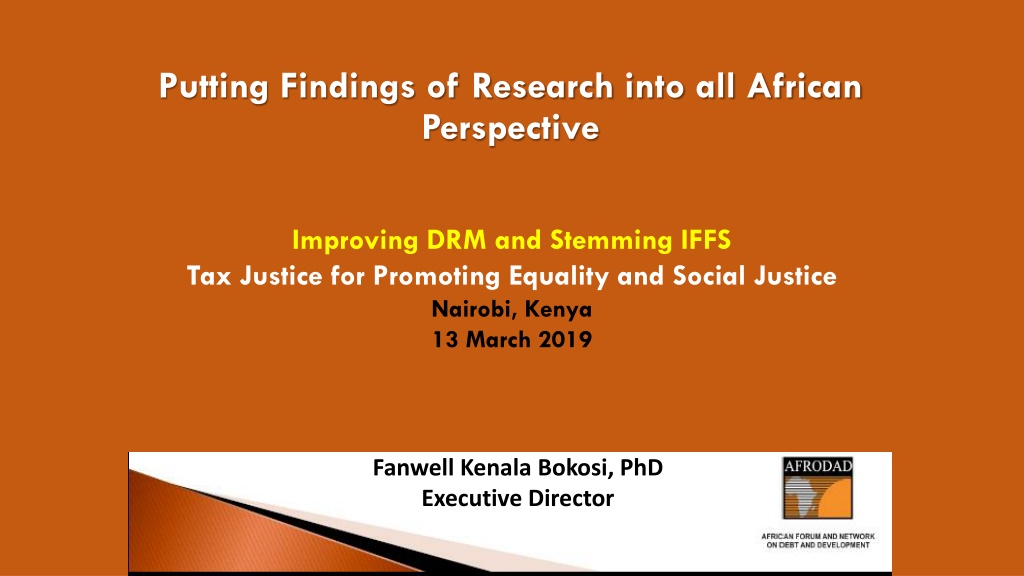


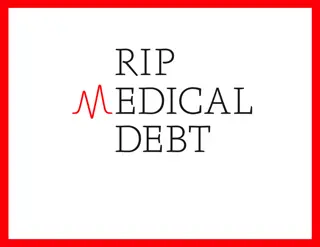
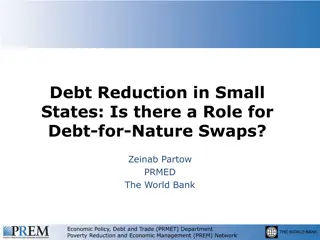
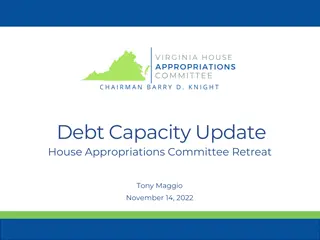
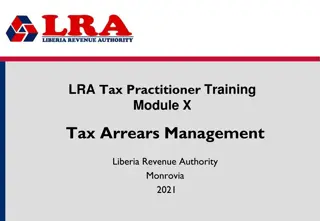
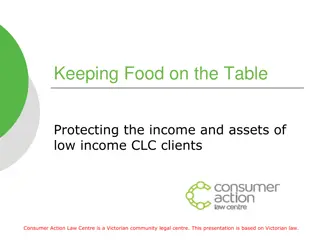

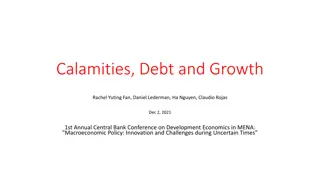



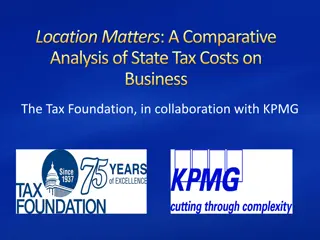


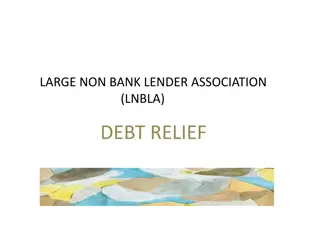
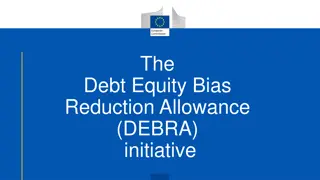


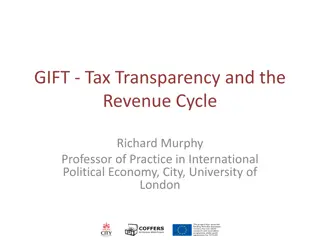



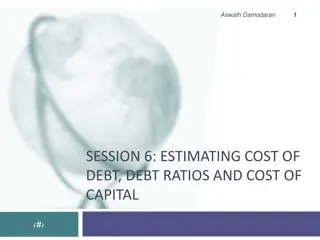

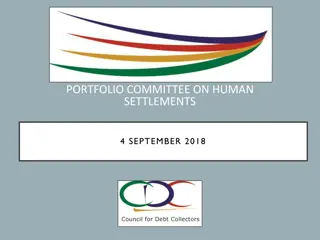
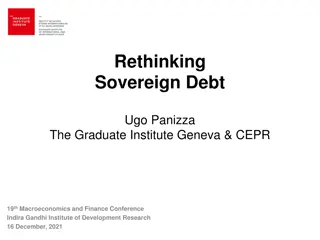


![Town of [Town Name] Real Estate Tax Rates and FY 2024 Budget Summary](/thumb/62211/town-of-town-name-real-estate-tax-rates-and-fy-2024-budget-summary.jpg)

